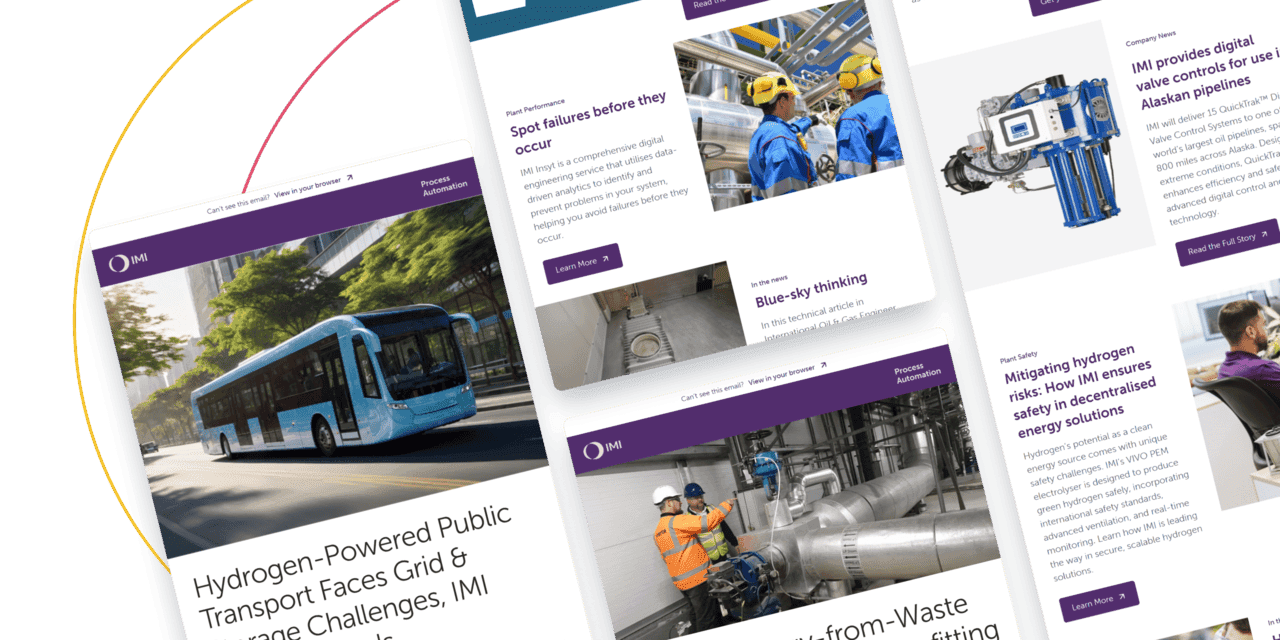Organization Sectors
Organization Sectors
Stay up to date on all the latest Process Automation news
© 2025 IMI plc, All Rights Reserved
© 2025 IMI plc, All Rights Reserved

BLOG

Written By Tom Morton
November 28, 2024
Earlier this year, we highlighted IMI’s extensive procedures for assessing our different products, such as Acoustic Control Vantage (ACV). This approach involves exceeding established industry standards and specifications to pursue innovative design. We do this because defence environments demand a competitive edge, which keeps nations ahead of adversaries. The first piece, however, only touched on some of our methods. In this blog, we’ll examine the specifics of IMI’s in-depth testing and validation programme.
First, it’s worth explaining why there’s a need to go beyond the existing standards requirements.
The US Military (MIL) standards used to assess noise are well established, having been released more than 25 years ago. While still valuable, these standards have become outdated and, most importantly, fail to acknowledge how a component performs in operation.
This was our starting point when developing ACV, IMI’s stealth acoustic ball valve. With this product, we have sought to increase submarine operability while maintaining the vessel’s undetectability. However, the only way to do this and determine success with any degree of confidence was to create test conditions that closely resemble active service.
And herein lies the problem. MIL-STD-1474 and MIL-STD-740-2 make several assumptions about how a valve actually works and what noise levels can be achieved. This is reflected in the standards’ limited parameters, which require a valve to be tested at only 100%, 50%, and 5% flow rates.
With these rates, we could not adequately test ACV’s advanced design and demonstrate its game-changing qualities to customers. Why? Because they fail to reflect the real-world conditions of a submarine working at sea.
IMI has produced a series of more advanced testing methods to remedy these shortcomings.
They’re still derived from the MIL standards to ensure compliance but move beyond the specified flow rates, allowing us to measure how noise propagates throughout a vessel more accurately.
This is done using computational fluid dynamics. We use sophisticated modelling software to understand how pressure fluctuations (i.e., those created when fluid passes through a valve) interact with different structures. This analysis also allows us to determine the reverse – how the submarine’s structure interacts with the fluid.
Along with conventional acoustic analysis using fixed-position microphones, our software combines traditionally distinct aspects of testing and validation: air, structural, and fluid-borne noise. The result is a more definitive picture of how quiet a valve is, and it’s precisely why we’ve been able to reduce noise by up to 20dB with ACV. For context, if you were in a car travelling at 70mph and sitting next to an open window, the wind noise you would experience would be approximately 90dB; with the window closed, it would reduce to approximately 70 dB.
Hull valves form the critical boundary between the open sea and the interior of a submarine. Here, even a minor failure would cause catastrophic flooding, resulting in the loss of both vessel and crew.
To prevent this, designs must endure extreme conditions, including shock tests simulating underwater explosions. These tests can subject components to forces exceeding 1000 times gravity (1000g).
We design valves for optimal performance while avoiding the perils of overengineering. Like the abovementioned analysis, our approach combines proven design principles, restricted UK Defence standards, and advanced tools like Finite Element Analysis (FEA).
FEA allows for virtual testing to predict performance under extreme loads without the need to develop expensive prototypes. This method also provides detailed insights into material and component behaviour, surpassing conventional calculation techniques.
Environmental testing for corrosion and biofouling is crucial for ACV technology. Though made from materials similar to conventionally produced parts, our ACV components are additively manufactured using laser powder bed sintering. This process involves selectively melting a metal raw material in powdered form using lasers to sinter the powder particles together to build three-dimensional parts one layer at a time. Manufacturing parts in this way means the resulting metallurgical properties differ from those of a conventionally manufactured part.
These differences can affect how they resist corrosion in harsh seawater environments. Moreover, the unconventional structures integral to ACV valve performance could be adversely affected by biofouling (the accumulation of marine organisms such as barnacles), a significant challenge for submarines that can reduce efficiency, increase maintenance costs, and lead to significant damage resulting in inoperability.
In this instance, IMI has again gone beyond standard defence and industrial corrosion testing protocols. Partnering with subject matter experts, we have conducted specialised testing in real marine environments. We have submerged ACV prototype components, manufactured in a range of materials and geometries, for several months in marine environments in several locations around the world to monitor, in the real world, the accumulation of biofouling and corrosion effects. The test pieces were periodically removed from the test environment and carefully assessed to monitor what type and species of marine growth were present and the volume of organic matter that had accumulated before being returned to continue the test. This allowed us to track, over several months and across several locations, the variety of organic matter that settled and at what rate, depending on the part geometry, material, and environmental conditions at the test locations.
This approach evaluates the impact of corrosion and marine growth on ACV components and the effectiveness of our countermeasures. By testing in actual conditions, we have gained invaluable insights that allow our technology to remain reliable and efficient in what is arguably the most demanding working environment on earth.
Stay up to date on all the latest news and articles from IMI.

Stay up to date on all the latest news and articles from IMI.


Stay up to date on all the latest news and articles from IMI.
